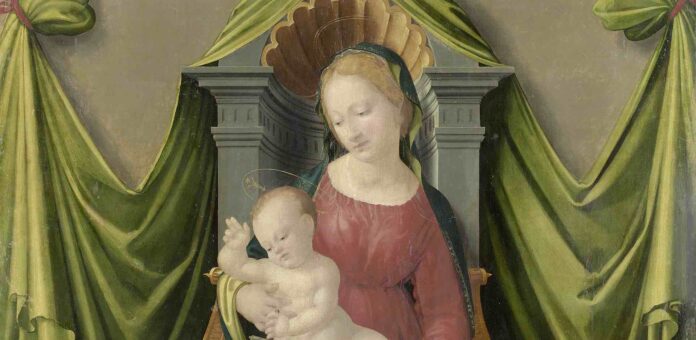The Gemäldegalerie is showcasing 60 paintings from the Museum of Western and Eastern Art in Odesa, the famous port city in the south of Ukraine that has in recent years been ravaged by war. The artworks in question were evacuated from the city before the onset of war and transferred to safety in Berlin, where they will be brought into dialogue with paintings from the collections of Berlin’s museums. The large-scale special exhibition, which follows on from a small preview presentation in the spring of 2024, is an extraordinary collaborative project funded by the Federal Government Commissioner for Culture and the Media.
A German-Ukrainian cooperation project
Shortly before the onset of Russia’s war of aggression, the most significant works held in the Odesa Museum’s collection were transferred to an emergency storage facility in a bid to safeguard them. The paintings in question are by European artists from the 16th to 19th century and include works by such prominent figures as Andreas Achenbach, Francesco Granacci, Frans Hals, Cornelis de Heem, Roelant Savery, Bernardo Strozzi, Alessandro Magnasco and Frits Thaulow.
The Odesa Museum of Western and Eastern Art
Established in 1924, the Odesa Museum of Western and Eastern Art houses a comprehensive collection of artworks and cultural-historical artefacts. The collection forms part of Ukraine’s cultural identity and has a number of commonalities with collections in Western European countries. Despite this, it is relatively unknown in Western Europe. This special exhibition brings 60 major artworks from the Odesa Museum into dialogue with 25 pieces from the Gemäldegalerie’s collection.
The highly focussed juxtapositions are almost immediately identifiable. Many of the artworks from Odesa were created by master artists whose works were also collected in Berlin, while others share a common thread with artworks in Berlin in terms of their subject matter. The integration of the pieces from the Berlin collections into the exhibition gives rise to illuminating and unexpected “encounters” and offers new insight into cultural-historical contexts.
Facets of Art History
The exhibition is organised into nine chapters, beginning with an introduction to the project and its contemporary historical context. The following exhibition chapters, which are inspired among other things by the various genres determined by European art history, reflect the many rich facets of the Ukranian collection, which is not especially well known in Western Europe. Never before has such a large number of paintings from the Odesa Museum been presented in Germany.
This special exhibition aims to introduce artworks from the Odesa Museum of Western and Eastern Art to a broad audience and to highlight the connections between Ukraine and Western Europe. The project is also intended as a gesture of solidarity with Ukraine – one that will hopefully contribute to increasing public awareness regarding the ongoing conflict situation in the country.
Curatorial Team
The exhibition From Odesa to Berlin: European Painting of the 16th to 19th Century is curated by Sabine Lata, research associate at the Gemäldegalerie, and Dagmar Hirschfelder, director of the Gemäldegalerie, with conservational supervision by restorer-conservers Anja Lindner-Michael and Thuja Seidel.
Publication
The exhibition will be accompanied by an illustrated exhibition catalogue.
The exhibition is funded by the Federal Government Commissioner for Culture and the Media.
Media partners: ARTE, Klassik Radio, Monopol, Tagesspiegel, The Berliner, tipBerlin, Weltkunst
A special exhibition of the Gemäldegalerie of the Staatliche Museen zu Berlin in cooperation with the Odesa Museum of Western and Eastern Art and the Alte Nationalgalerie of the Staatliche Museen zu Berlin.
Source : Museen zu Berlin






